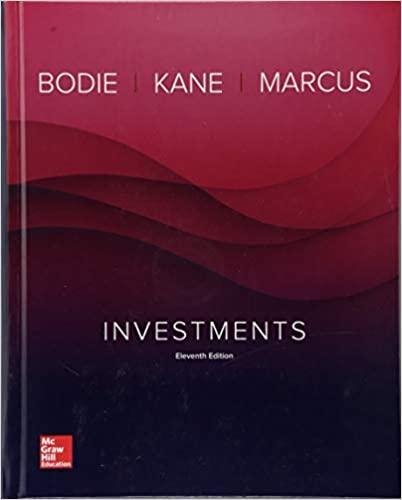Question
Draw the cash flow for each bond. Determine the par value based on bond type, the yield to maturity, term, and coupon payments, paid semiannually.
Draw the cash flow for each bond. Determine the par value based on bond type, the yield to maturity, term, and coupon payments, paid semiannually.
Part A:
| Zero Coupons Treasury Bonds | ||
| Maturity | Coupon | Ask |
| Aug. 2047 | 0.0 | 99.10 |
| Mar. 2038 | 0.0 | 98.29 |
Part B:
| Coupon Treasury Bonds | ||
| Maturity | Coupon | Ask |
| Aug. 2060 | 3.000 | 104.28 |
| Feb. 2035 | 7.625 | 147.11 |
| Aug. 2039 | 6.125 | 132.29 |
Part C:
| Company Bonds | |||
| Bond Issuer | Coupon | Maturity | Last Price |
| Petrobras | 5.625% | May, 2043 | 74.60 |
| Royal Bank of Scotland | 5.000% | February, 2058 | 103.70 |
| Bank America | 3.000% | September, 2036 | 100.00 |
Part D:
| Municipal Bonds | |||
| Coupon | Maturity | Price | |
| Florida Bridge Construction | 3.00% | Nov. 2036 | 106.78 |
| Palomar Health | 4.00% | Oct. 2037 | 111.98 |
Part E: Yield to Call
- Suppose a bond has a price today of $800, a coupon rate of 4% annually, and six years to maturity. If coupon payments are made semiannually. Determine the yield to call.
- The 6% coupon rate ABC bond has a current price of $1050, coupon payments paid semiannually, and two years until call and six years until maturity. Determine the yield to call and yield to maturity on ABC bond.
Step by Step Solution
There are 3 Steps involved in it
Step: 1

Get Instant Access to Expert-Tailored Solutions
See step-by-step solutions with expert insights and AI powered tools for academic success
Step: 2

Step: 3

Ace Your Homework with AI
Get the answers you need in no time with our AI-driven, step-by-step assistance
Get Started


